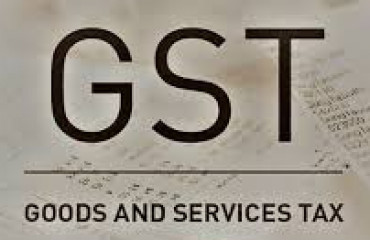
The government aims to maintain the top Goods and Services Tax (GST) slab of 28% for luxury and sin products, but is open to discussing combining the three slabs of 5%, 12% and 18% into one, according to Revenue Secretary Tarun Bajaj.
The government aims to maintain the top Goods and Services Tax (GST) slab of 28% for luxury and sin products, but is open to discussing combining the three slabs of 5%, 12% and 18% into one, according to Revenue Secretary Tarun Bajaj.
With regard to the GST, there is a four-rate structure that levies a peak rate of 28% on autos and a low rate of 5% on necessities. The other tax brackets are 12% and 18%. In addition, a special rate of 3% is applied to gold, jewellery, and precious stones, while a rate of 1.5% is applied to cut and polished diamonds.
Additionally, a cess is charged on products with the highest tax rate of 28%, including luxury, sin, and demerit goods. The money from the cess is put into a separate corpus called the Compensation Fund, which is used to make up for the revenue loss the state experienced as a result of the introduction of the GST.
Speaking to the leaders of the industry, Bajaj claimed that the rate rationalisation effort of the GST Council is the outcome of an examination of GST five years after its implementation and that the policymakers do not have a "fetish" for raising the tax rates to the level of 15.5 percent, which is revenue-neutral.
On the industry demand for bringing petroleum products under GST net, he said since fuel constitutes a larger part of their revenues, both the Centre and states have some apprehension. "We will have to wait for some time."
"Of the 5, 12, 18 and 28 per cent, we would have to continue with 28 per cent because in a developing economy, in an economy with so much of income disparity, there would be some luxury and sin items that would and should attract a higher rate of taxation.
"But, whether on 5, 12 and 18 (per cent), we can bring down to 2 rates to start with and then see how the country grows and whether there is a capacity to bring it to one rate or not is something to be seen. It is a very difficult challenge," Bajaj said at an Assocham event.
Under the leadership of Karnataka Chief Minister Basavaraj Bommai, the GST Council established a Group of Ministers (GoM) to recommend rationalising tax rates, combining tax slabs, reviewing the exempt list, and correcting duty inversion in situations where taxes on final output are lower than those in inputs. The GoM now has an additional three months to submit a final report.
According to a study by the RBI, the weighted average tax rate under the GST has decreased from 14.4% at the time of its debut to 11.6% today. According to the Subramanian Committee study, which was submitted before the implementation of the GST, the revenue-neutral rate under the law should be close to 15.5 percent.
Based on the interim GoM report from last month, the GST Council eliminated tax exemptions for a number of products, including pre-packaged and labelled wheat flour, paneer, curd, and lassi, while correcting inverted duties for products like LED lamps and solar water heaters.
"We keep talking of RNR at 15.5% and the present rate being 11.6%, may be gone up to 11.8% or 11.9% with inverted duties being removed. What is it? Are we looking at whether we should reach a rate of 15%? I really do not think there is any fetish in the minds of policymakers that we have to reach that particular rate," Bajaj said.
After five years, the secretary said it is time to reflect on how the GST rate structures have worked out, determine whether there is a need to reduce the number of rates from what they are currently, and identify which commodities can be subject to higher rates and which can be subject to lower rates.
"I think, we as policymakers and states now are looking at GST from this eye and not having this objective that I have to somehow increase rates in some commodities to reach that 15% odd rate," Bajaj added.
